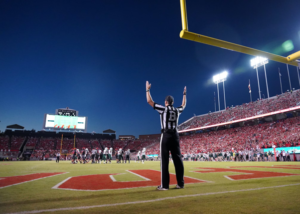
Football is far more than just a game for its avid fans; it’s become an integral part of American culture, bringing people together, elevating our spirits in times of trial, and giving us something to strive for as we watch our favorite teams battle on the field. But have you ever considered the psychological elements that make watching American football enjoyable? From relief theory to schematic processing theory, there are many sophisticated dives into how humans respond emotionally to this beloved sport.
This blog post will explore some key psychological components of why Americans find football so much fun. For those interested in betting on sports, particularly football, check out the Liga MX betting odds to get insights and potentially place bets on upcoming matches.
Mental Toughness in American Football
It is a crucial characteristic woven into the game’s fabric and is as critical to players’ success as their physical skills and abilities. Mental toughness refers to the ability to perform consistently towards one’s potential, regardless of adverse circumstances. This might include physical discomfort, adverse weather, or the pressure of a high-stakes game.
This mental resilience enables athletes to maintain focus, discipline, and emotional control, particularly in high-pressure situations. Sports psychologists often work with football players on techniques to foster mental toughness, such as visualization, cognitive restructuring, and mindfulness. It’s not just about physical strength in football; the mental game plays a significant role, too.
Role of Teamwork and Leadership in American Football
These elements go beyond the physical and mental toughness of individual players, shaping the cohesive identity of the team as a whole.
Football is a sport that demands the well-coordinated efforts of all team members. Each player has a specific role, and the team’s success depends on the flawless execution of these roles. This coordinated effort is where teamwork becomes critical. Players must trust each other’s abilities and work together to create strategic plays that outsmart the opposing team.
Leadership, in turn, guides this collective effort. A good leader – be it the team captain, a senior player, or the coach – inspires confidence, sets the vision, and instills discipline in the team. They ensure the team stays focused on their collective goals and maintains morale, especially during testing times. A leader’s ability to make crucial decisions under pressure could mean a triumphant victory and a disappointing defeat.
In essence, while individual mental toughness is vital, effective teamwork and strong leadership are equally crucial in shaping a high-performing football team.
Impact of Media on American Football
With extensive coverage of games, in-depth analysis, and behind-the-scenes stories, media outlets have brought the sport into the homes and hearts of millions. The media’s role transcends the mere broadcast of games; it substantially shapes public perception and influences the dynamics of the sport.
Television, in particular, has magnified football’s reach, making it the most-watched sport in America. The broadcasting of matches, player interviews, and expert analysis help create an emotional connection between the audience and the sport, influencing fan loyalty and engagement.
Moreover, media narratives often shape the perception of teams, players, and games. Positive media coverage can paint a team or player in a favorable light, influencing public opinion and even the players’ morale. Conversely, negative coverage can lead to adverse public sentiment.
The advent of social media has further amplified the influence of media. It offers a platform for real-time discussions, fan engagement, and instant updates, creating an immersive experience for fans. However, it also opens up new avenues for criticism and scrutiny, affecting players’ mental resilience and the perception of teams.
Public Perception of American Football
The sport’s drama, intensity, and unpredictability create a spectacle that resonates with the audience, fostering a deep emotional connection. The players’ mental toughness, teamwork, and inspiring leadership stories often align with societal values, further strengthening this bond.
However, we cannot underestimate the media’s role in spotlighting these aspects. It has brought the sport closer to the public, influencing perceptions and driving engagement. Yet, it also can sway public sentiment in both positive and negative directions. Public perception of American football is a complex interplay of the sport’s inherent qualities and external influences, continually shaped by societal trends and media narratives.
Conclusion
To summarize, American football is more than just a game; it’s a microcosm of life, reflecting the importance of mental resilience, teamwork, leadership, and media influence. Its appeal goes beyond physical contests on a field, resonating deeply with the American public’s values, emotions, and aspirations. As fans, we must consider the myriad factors shaping our perception of the sport, including media narratives, and remember to appreciate the complex psychological dynamics at play.
Finally, as the betting odds in NCAAF demonstrate, the game’s unpredictability, driven by human factors, adds an exciting dimension to the fandom, keeping us on the edge of our seats and continually reaffirming our love for the sport. So it’s important to check the NCAAF betting odds before making a wager. By doing so, you can have an educated guess on the game’s outcome and make better betting decisions.







